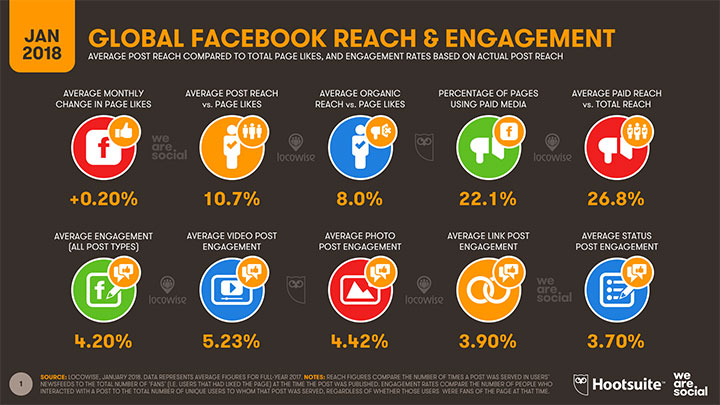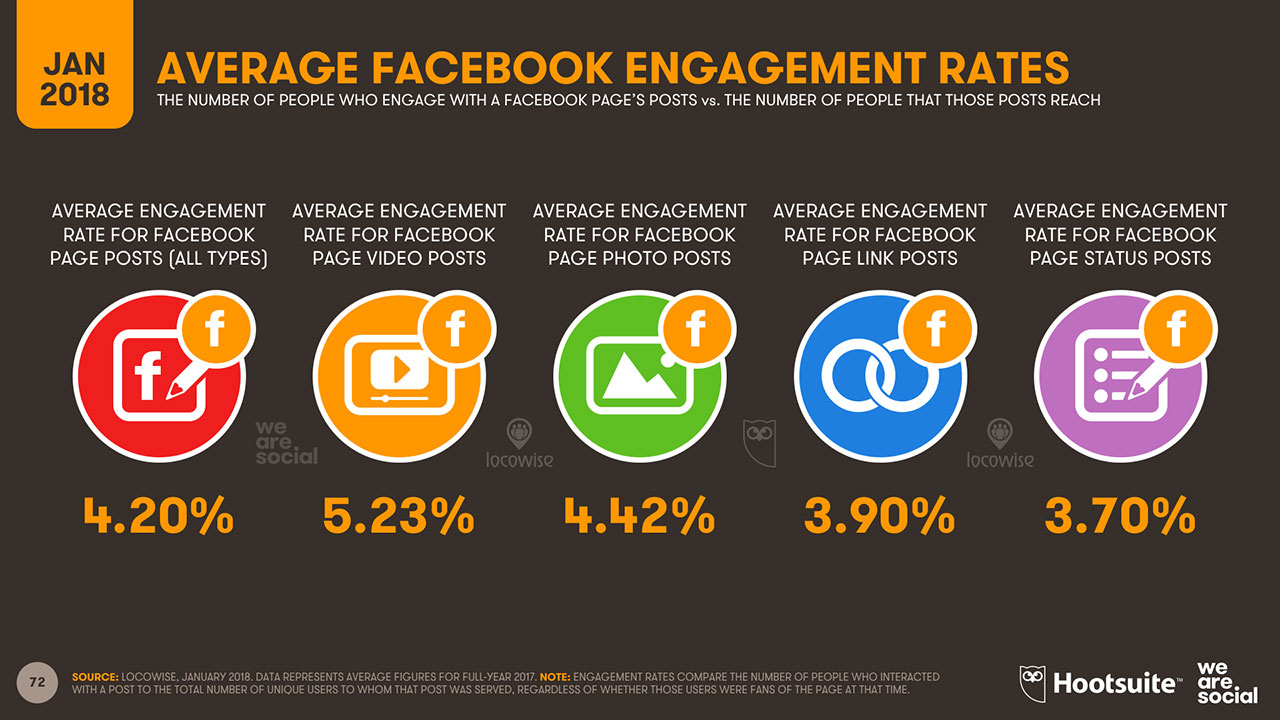10 Lessons From The Global Digital Trends In 2018 Report
Sahail Ashraf posted on 30 April 2018
The Digital Trends report for 2018 has thrown up a wealth of information and useful data about digital habits worldwide.
We’re proud to say that Locowise took part in the project, and helped to gather the huge amount of information and insight the report provides.
It’s a big report, so we thought we’d dig into it and bring you some of the most important points that it covers.

Social media is growing
Internet use is growing
Habits
In January last year, the word was in a situation that is very different to what it is now. Since January 2017, there has been a growth of 13.2% in the number of social media users worldwide. In addition to that, there has been a 14% increase in the number of active social media users who primarily use mobile devices.
In basic terms, that’s another 360 million people in the world who use their mobiles to access social media.
However, perhaps the most striking piece of data that the report presented centered around the number of people on the planet who use the Internet. This covers all areas, including gaming and research, but in January 2018, it stood at 4.021 billion, which is a staggering 53% of the world’s population.
North America and Northern Europe have the highest penetration of Internet users (with 88% and 94% of their respective populations).
The two top countries regarding the time spent on the Internet (from any device) were Thailand and the Philippines, with Thailand average use per day being 9h 38 mins. The lowest was Morocco with 2h 53 mins.
Interestingly, a European country (France) was at the bottom of the rankings for time spent on the Internet using a mobile device, with just 1h 20 mins.
Paid reach vs organic on Facebook
Interestingly, as the world comes to realise that organic reach is becoming a thing of the past, the report throws up a key stat that confirms the value of paid reach. According to the report with the data collected by Locowise, 22.1% of all Facebook pages use paid advertising.
However, the report then ranks countries according to the engagement rate. This is amazing stuff because it shows that pages from some countries are enjoying relatively decent organic reach. Finland is up there at the top of the organic reach charts with a very healthy 34.6% of total page likes reached per post. Right at the bottom of the chart is Guatemala, with 0.45% of the total page likes seeing the organic updates.
Social media use
The platforms
Messenger apps
The report also allowed us to identify the percentage of each area’s population who were actively using a social media channel. It showed that 63% of South America’s population, for example, are using the country’s most popular social media channel. And that is only 3% lower than Northern Europe.
The single biggest area of growth for social media is India. The report showed that India experienced a 31% growth in the number of people who used social.
This is an intriguing area, especially for an agency that is global. The biggest platform by far is Facebook, still, after all this time. It has 2,167 million users worldwide. The second biggest social media space is YouTube with 1,500 million users. Instagram comes in at 800 million users worldwide.
Again, not a surprise, and if anything this data just serves to show how much of a dominant force Facebook still is.
This is a huge growth area in digital anyway, but there are still two key players. The top messenger app worldwide is Whatsapp, and second place goes to FB Messenger.
And the map shows that Facebook Messenger is mainly concentrated in the US, with Whatsapp covering the rest of the world. Both of these are owned by Facebook by the way.
Average Facebook Page Engagement
There weren’t too many surprises here, because if you’ve been reading Locowise studies for any length of time, you’ll know exactly which types of posts get the most engagement. But the numbers are still interesting.
The average engagement rate for Facebook video posts is the winner by far with 5.23%. Photo posts come up next with 4.42%. Bottom, as always, is status, with a measly 3.70%.
Instagram usage
One particularly interesting nugget of information that came from the report, and centered around the gender of users of the Instagram platform.
It’s now almost equal with female users making up 50.4% of the total, and males making up 49.6% of the user base. This effectively takes gender out of the equation to an extent when brands create posts.
Mobile
Mobile users were also focused on as part of the report. While you would expect North America and Europe to have a large penetration of users in this area, it is interesting to see that Latin America have 73%, above the global average of 68%.
This promising picture continues when you look at connectivity. In the Latin America region, connectivity is as high as 115%. It’s a switched-on part of the world, which is encouraging for brands with a global message. There has been a significant level of growth in mobile web traffic too. We all know that mobile users are favouring their phones and tablets over desktops to access the Web. But the picture the report shows us is even more encouraging.
In 2009, the share that mobile devices had of the Internet was 0.7%. In 2018, it is expected to be 52.2%. Brands who are delivering on mobile will benefit the most.
App usage is also an interesting area. The global average number of apps installed on a smartphone is 80. And what’s interesting is that native apps get huge preference over browser services. Time spent using native apps versus Web browsing came in at a ratio of 7:1.

Extensive and valuable
The report is extensive, and can be accessed here. The biggest lessons:
– Mobile is dominating and that more and more people are using native mobile apps
– Video is big on social, but it was interesting to see just how big.
– The boom in usage of mobiles in Latin America is a huge story
– Organic reach on Facebook is pretty much dead (except it’s not in some countries)
Take some time to read the report, and if you want some of that data on a regular basis, try a free week of Locowise. Because it’s best to be informed.





